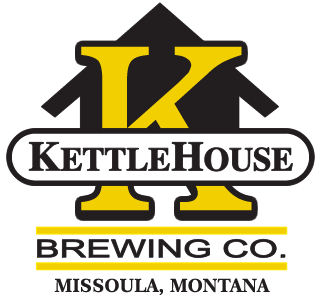 The art & craft of brewing beer is an age old process very likely going back more than 10,000 years. Although brewing equipment and technology have improved over time, the process largely remains unchanged. Primary steps in the production of beer include wort production (wort is unfermented beer), fermentation, lagering, conditioning and packaging. We’d like to show you how Kettlehouse Brewing Co. crafts its award-winning beers.
The art & craft of brewing beer is an age old process very likely going back more than 10,000 years. Although brewing equipment and technology have improved over time, the process largely remains unchanged. Primary steps in the production of beer include wort production (wort is unfermented beer), fermentation, lagering, conditioning and packaging. We’d like to show you how Kettlehouse Brewing Co. crafts its award-winning beers.
Locally grown 2-row barley is trucked in 48,000 lb loads from eastern Montana and transferred into our bulk silo. This 2-row barley is the base malt for all of our beers and will provide the majority of sugars for fermentation. Along with this pale malt, specialty malts are added to provide color, malt flavor, and mouthfeel/body to the beer. The barley is run through a mill to crack the kernel, but not break the husk, to prepare the barley for brewing.
The first major step in the brewing process is creating the mash in the mash tun. Milled barley is added to warm (~150 deg F) water. During this step, naturally occurring enzymes from the seed convert starches to sugars and break down proteins. After sugar conversion is complete, the temperature is raised to 168 deg F to halt enzymatic activity. The mash is then transferred to the lauter tun.
The second major step in brewing aims to remove the solids (grain husks and particulate matter) from the mash to deliver clear wort to the boiling kettle. The lauter tun contains a slotted screen, or “false bottom”, which blocks the particulates while allowing the liquid to pass through. The wort is recirculated from the bottom of the lauter tun back to the top of the grain bed for 15-20 min which clarifies the wort by passing it through the natural filter created by the uncracked grain husks. After clarification is complete, the wort is drawn out through the bottom of the lauter tun and pumped to the boiling kettle. It takes about 2 hours to complete this step of the process.
 The wort in the boiling kettle is brought to a boil after the total volume of wort is reached. The wort will boil for two hours, with hops being added at three separate times. The first hopping, which occurs after 10 minutes of the boil, will provide the majority of the bitterness to the finished beer. The second hopping, which occurs with 30 minutes of the boil remaining, is considered the flavor hopping. The final, or aroma hopping, is added at the end of the boil.
The wort in the boiling kettle is brought to a boil after the total volume of wort is reached. The wort will boil for two hours, with hops being added at three separate times. The first hopping, which occurs after 10 minutes of the boil, will provide the majority of the bitterness to the finished beer. The second hopping, which occurs with 30 minutes of the boil remaining, is considered the flavor hopping. The final, or aroma hopping, is added at the end of the boil.
The next stage in the process is the whirlpool. At this time, the wort is spun for 15-30 seconds and then stopped. During the 20 min. rest period, hops, large protein molecules and any particulate matter sinks to the bottom. An effective whirlpool will deliver clear wort to the fermenter.
The final step in the brewing process is the “knock out”. During this step, hot wort is chilled to room temperature through a heat exchanger, and oxygen is added in-line while the wort is transferred to the fermenter.
Yeast is added to the wort in the fermenter to begin the fermentation process. During fermentation, the yeast consume sugars and create alcohol and carbon dioxide as by-products. We are able to monitor fermentation progress by measuring the change in sugars over time (reduction of sugar = production of alcohol). There are two major types of beer: ales and lagers. These types are a result of the two different species of brewing yeast: ale yeast and lager yeast. Ale yeast ferment on top of the wort while lager yeast ferment at the bottom. Typical ale fermentation will take 4-5 days at 62-70 deg F. Typical lager fermentation ranges from 5 days to 2+ weeks at 52-60 deg F. Many flavor changes occur during fermentation. Part of the art of brewing is fermenting to produce a beer with the right balance of bitterness and sweetness.
After fermentation is complete, the beer undergoes a 2 day rest period and is then “crashed” (cooled to 33 deg F). Crashing the beer causes the yeast to go dormant and begin to settle to the bottom of the fermenter. Thus begins the lagering phase. Our beers are lagered, or aged, from a few days to several months depending on style. During the lagering period the beer matures, allowing flavors to mellow and residual yeast to settle. Conditioning, or carbonating, follows the lagering phase. Carbon dioxide can be injected into the conditioning tank to fine tune the residual carbonation created during fermentation. After lagering and conditioning steps are complete, the beer is packaged into kegs or cans.
